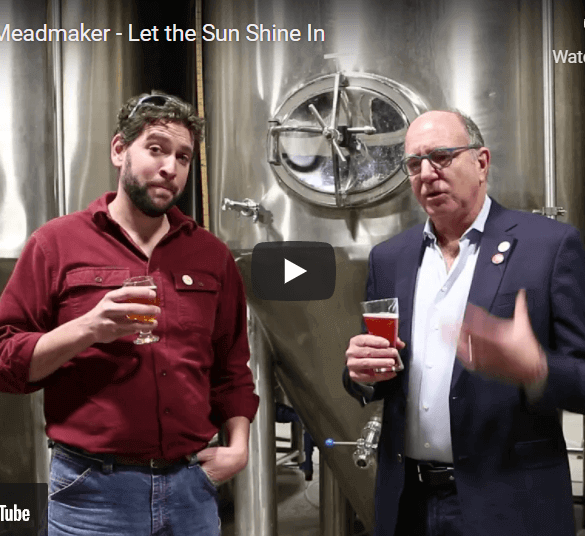In which Ricky the Meadmaker answers questions about quick carbonation, Brettanomyces mead, whether it’s legal to make braggots at a meadery in the US, and more!
I know I'd probably get more views if I had clickbait titles for my YouTube videos but I'm not going to do that. That's not my style. But what I could start doing is for these cold opens, I could start doing the thing they do on the news where they go, "Is hydrogen sulfide related to yeast health? The answer might surprise you. Up next."
Welcome to Ask the Meadmaker, where I, Ricky the Meadmaker, answer your questions about mead making, mead drinking, mead brewing, and really any question you're willing to send to me.
Our first question this week comes from three different people and it's about the fastest way to carbonate a session mead. Now the fastest way we call in the industry the shake and bake. You take a keg – you’ve got to have a keg - and you get it cold, like 32˚F, then you push CO2 in there, like 40 psi, and you shake it till your arms get tired and then you do it again. And then you taste it. Has it carbed yet? If not, do it again. Taste it. Has it carbed yet? If not, do it again. Sounds like a lot of work. It is. It's mostly pointless. Please guys, just wait for two weeks for it to carb.
Our next question comes from John, and John has been making mead at home for a while. But he has a problem. All of his meads are - he says flat but I think he means lacking in punch or flavor - unless he carbonates or oaks them. Then they're pretty good. What can he do to have a robust mead without having to carbonate or oak it? And the answer is a lot of things. Keep watching these videos.
Dan has a similar theory to mine. In our famous episode Pet Smells, he thinks that the aroma is coming from yeast nutrient that isn't taken up by the yeast and then becomes ammonia or urea in solution. And that is exactly our theory, though we don't have robust evidence to prove it yet.
Sage wants to know about using Brettanomyces exclusively to make a mead. And then he sent me another email with some theories, and then another email before I got back to him again. And then another email that he's thinking about making one. So rather than giving my theories about Brettanomyces-only mead, Sage, let me know when it's done and I'll talk about it on air.
Our last question this week comes from Anthony and I'm not certain I've actually answered any questions yet this week. Well, I might as well now. He wants to know if a meadery in the United States is allowed to make a true braggot. That means, in his mind, more than 50% honey in the fermentables, and a certain amount of grain. The answer is no. We've talked about it in the past, but the federal government believes there are three types of alcohol. There is wine, beer, and liquor. So, what do you do with cider? Well, that's wine because it's not a beer and it's not a liquor. What do you do with mead? Well, it's not a beer, it's not a liquor. Sake is weird because it's made from grain, but treated like a wine.
Anyway. The long and the short of it is we are not allowed to have any grain delivered to our facility because we are legally a winery. Distilleries and beer breweries are allowed to not only get grain, they can ferment with honey as well, as long as it doesn't surpass 50% of the fermentables. Is this fair? No. Such is life. If this is the biggest problem we have in society today we're doing all right.
So, that was the last question. Keep sending them. I'll get to them as soon as possible. Cheers.




